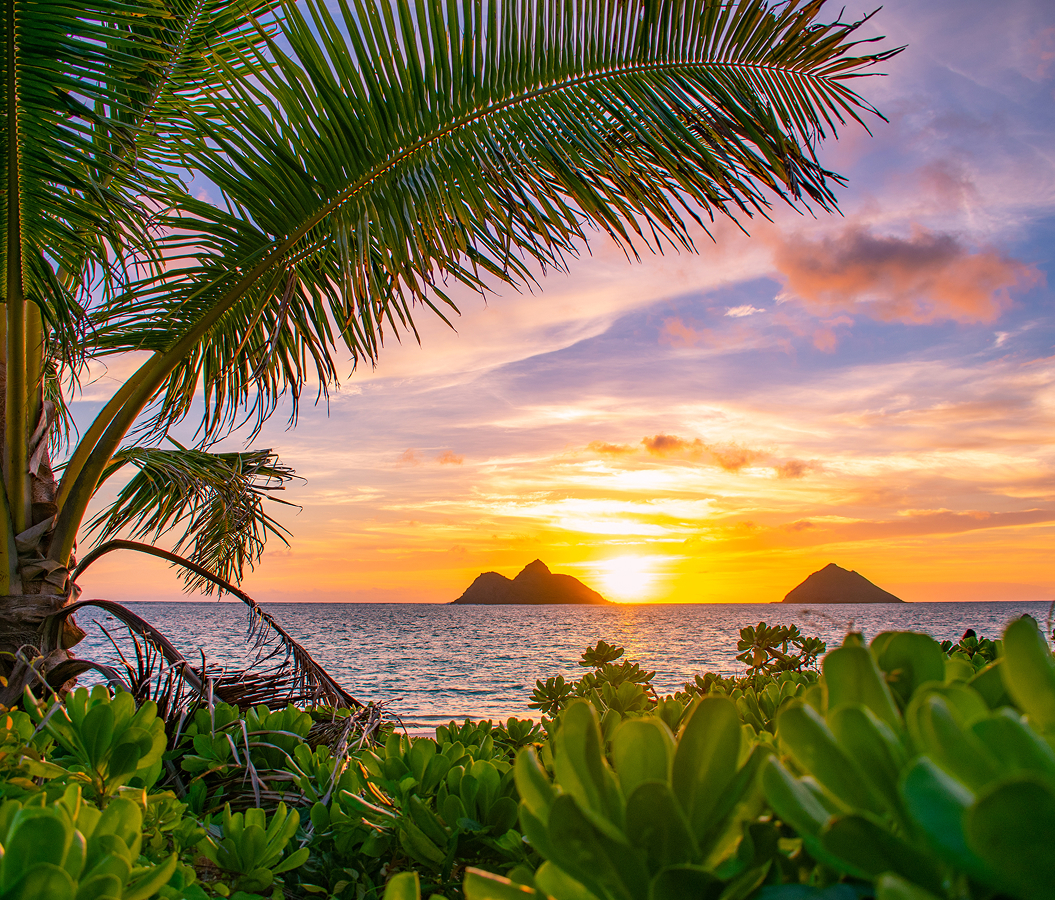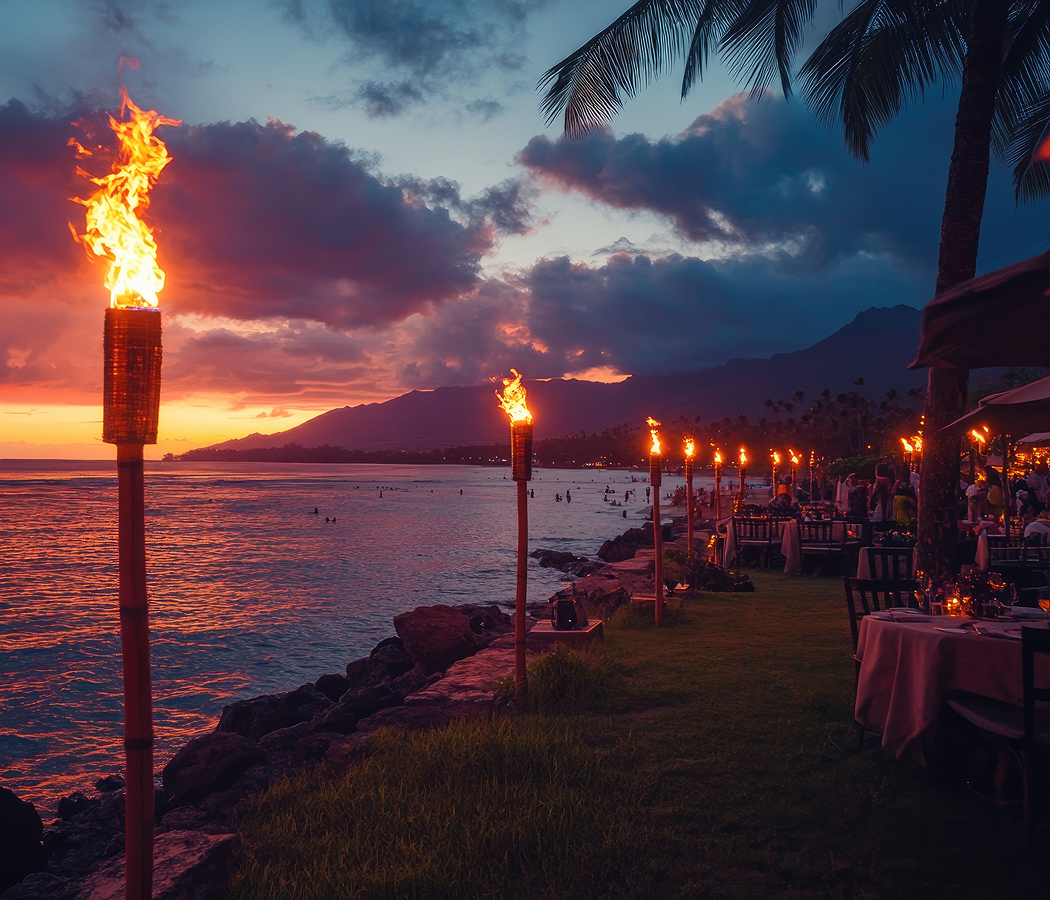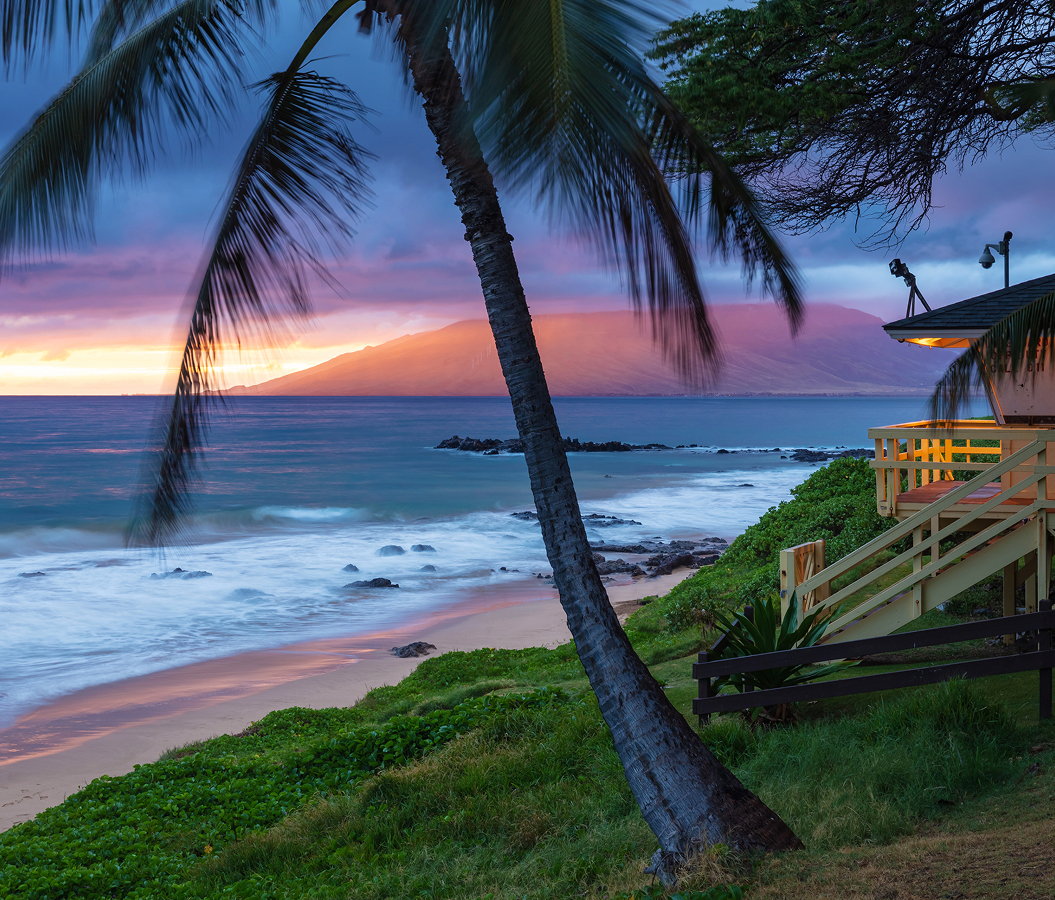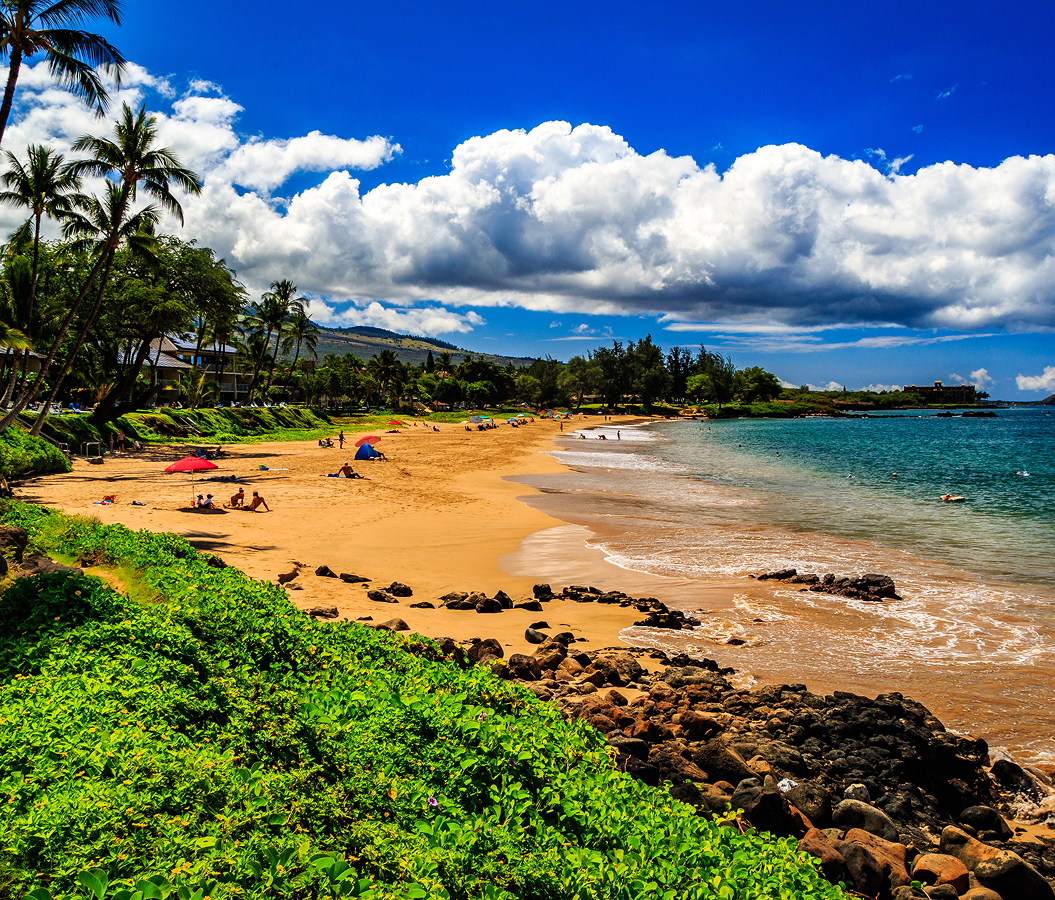
Why you should experience Diamond Head in Honolulu.
Diamond Head in Honolulu is Hawaii’s most iconic natural landmark, a volcanic monument that guards the edge of Waikiki with silent grandeur and breathtaking views.
Known to Hawaiians as Lē‘ahi, or “brow of the tuna,” Diamond Head is both a symbol and a sanctuary, representing the meeting of earth, fire, and sky. From a distance, its crescent-shaped ridge rises dramatically from the coastline, its rugged slopes glowing golden in the morning light. Up close, it reveals a landscape carved by eruption and time, steep switchbacks, tunnels cut through ancient lava rock, and lookout points that seem to hover above the Pacific. Climbing to the summit is a rite of passage for visitors and locals alike. The trail ascends just under a mile from the crater floor to the observation deck, where the panorama unfolds: the turquoise sweep of Waikiki Beach, the glimmer of the Pacific, and the faint outline of neighboring islands beyond the horizon. The experience is part history, part geology, and part pure exhilaration. Each step echoes with the island’s layered story, from the crater’s explosive birth over 300,000 years ago to its use as a military lookout during World War II. Yet above all, Diamond Head is an experience of perspective, a place where you can see not only the island’s beauty, but its soul.
What you didn’t know about Diamond Head.
Though Diamond Head has become synonymous with Hawaii’s postcard perfection, its history stretches far beyond its modern fame.
Geologists classify it as a tuff cone, formed when rising magma met groundwater, causing a massive steam explosion that created its signature crater shape. The resulting walls, steep, layered, and porous, remain one of the best-preserved examples of this rare volcanic phenomenon in the world. Early Hawaiians considered the site sacred, believing the summit held spiritual power and served as a navigation beacon for canoes approaching O‘ahu. In the late 18th century, British sailors mistook the calcite crystals embedded in the crater’s slopes for diamonds, hence the name that endures today. In the early 1900s, Diamond Head took on a new role as part of O‘ahu’s coastal defense system. The U.S. military constructed bunkers, tunnels, and artillery observation posts within the crater, transforming it into Fort Ruger, the first military reservation in Hawaii. Several of these wartime remnants still exist today, accessible along the hiking trail. In 1968, Diamond Head was designated a State Monument, protecting its geology, ecology, and cultural heritage. Today, it’s more than just a geological wonder, it’s a living classroom, where hikers walk through history layered in stone, vegetation, and legend. And while millions visit each year, Diamond Head somehow maintains its serenity, an enduring testament to how nature and culture coexist in balance on these islands.
How to fold Diamond Head into your trip.
To truly experience Diamond Head, approach it not just as a hike, but as a pilgrimage to one of Hawaii’s most storied summits.
The trailhead lies within Diamond Head State Monument, just a 10-minute drive from Waikiki. Entry is timed by reservation, so it’s best to book in advance and arrive early in the morning to avoid the heat and crowds. The hike itself is moderately challenging, about 1.6 miles round trip, and takes roughly 60 to 90 minutes, depending on pace. Wear sturdy shoes, bring water, and prepare for a steady incline, narrow tunnels, and a staircase of nearly 100 steps leading to the final lookout. Along the way, pause at interpretive signs that detail the crater’s volcanic formation and military history. The payoff at the top is extraordinary: a 360-degree view spanning Honolulu, the Ko‘olau Range, and the endless blue Pacific. For photographers, sunrise offers the most dramatic light, painting the crater walls in amber and coral tones. After your descent, reward yourself with a fresh coconut or shave ice from one of the stands near the park entrance. To extend your visit, explore the nearby Diamond Head Beach Park, a quieter stretch of coastline beloved by local surfers, or visit the Kapi‘olani Park area at the base for panoramic views back toward the crater’s profile. Standing on its summit, the breeze in your hair, you’ll understand why Diamond Head has become a symbol of both Hawaii’s natural power and its enduring spirit, a monument not built by human hands, but by the island itself.
Hear it from the Foresyte community.
Climb looks easy until you’re halfway up wondering why you skipped leg day. Then you hit the top, wind in your face, whole island spread out like it’s posing for you. Worth every sweaty step.
Where meaningful travel begins.
Start your journey with Foresyte, where the planning is part of the magic.
Discover the experiences that matter most.












































































































